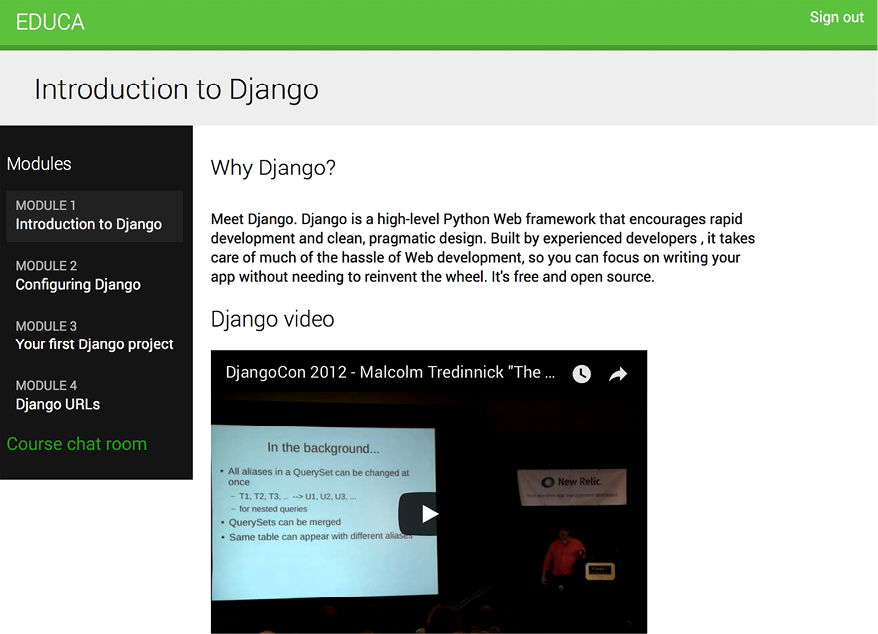Building a Chat Server
In the previous chapter, you created a RESTful API for your project. In this chapter, you will build a chat server for students using Django Channels. Students will be able to access a different chat room for each course they are enrolled on. To create the chat server, you will learn how to serve your Django project through Asynchronous Server Gateway Interface (ASGI), and you will implement asynchronous communication.
In this chapter, you will:
- Add Channels to your project
- Build a WebSocket consumer and appropriate routing
- Implement a WebSocket client
- Enable a channel layer with Redis
- Make your consumer fully asynchronous
The source code for this chapter can be found at https://github.com/PacktPublishing/Django-4-by-example/tree/main/Chapter16.
All Python modules used in this chapter are included in the requirements.txt file in the source code that comes along with this chapter. You can follow the instructions...


